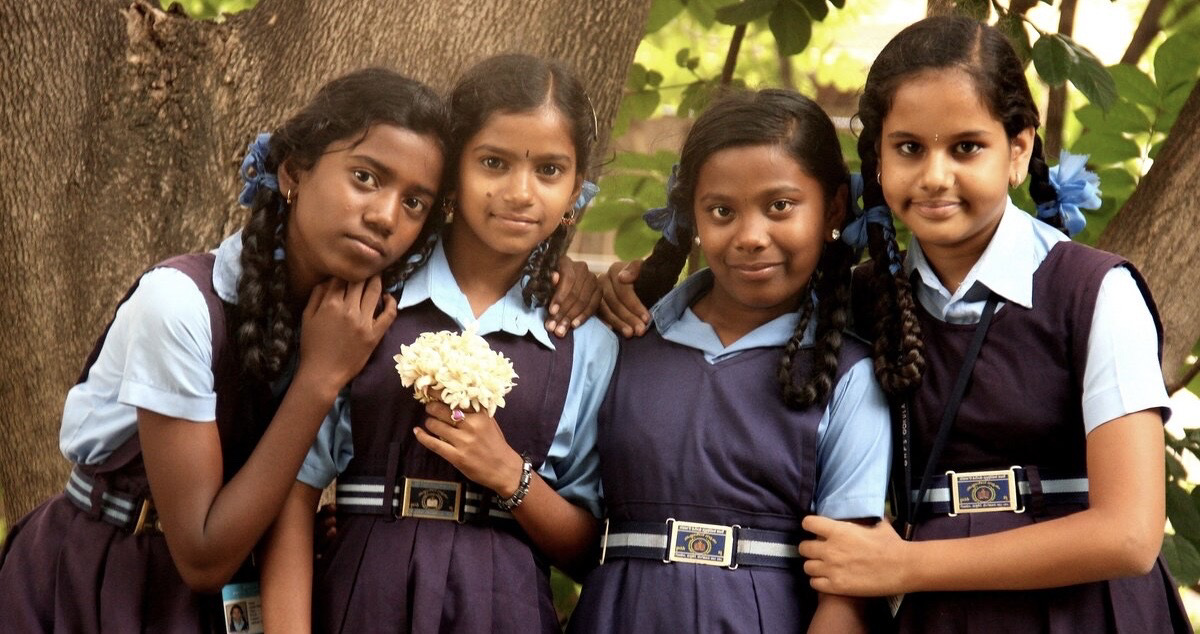School uniforms can also be stylish: what schoolchildren from around the world wear
Discussions on the topic of school uniforms in Russia are only gaining momentum every year. Some consider business attire a necessary element of the educational process, while others insist on its mediocrity and impracticality. One way or another, we should not forget that the tradition of school uniforms has a long history and is practiced in most countries of the world.
In this article, we invite you to familiarize yourself with a small selection of uniform options for schoolchildren from different parts of the world, as well as find out how the students themselves feel about its compulsory nature.
England
Uniforms are an integral part of school culture in the United Kingdom. It was first introduced in the 16th century under Henry VIII and was a kind of blue coat-coat, created following the example of a military uniform. The choice of color was justified by its symbolic meaning (in the Middle Ages it was believed that blue was the color of humility), as well as the cheapness of the dye. The first school to support the innovation was Christ Hospital School, which still exists today.
Much time has passed since then, and the uniform of English schoolchildren has changed significantly. A modern standard set of school clothes includes summer and winter wardrobes, as well as clothes for sports. Most schools give preference to more conservative, calm colors: blue, gray, brown, light green - however, a number of educational institutions also practice brighter colors.

The uniforms of boys and girls have significant differences. So, for boys there is a jacket or pullover, a shirt, a tie, dress pants or shorts, in the case of primary school, and, of course, formal shoes, mostly black. For girls, a blazer, a skirt below the knee, a white shirt, a pullover and classic shoes without a hint of heel or decorative elements are required; sundresses are also appropriate in some schools. In the summer, young female representatives wear branded socks, and in the winter - tights of a certain color and a certain material. The girls' uniform itself looks rather ascetic.

Schoolchildren in England honor traditions and have great respect for the obligation to wear a uniform.
Japan
Fans of Japanese culture know exactly how diverse school uniforms are in this country. The tradition of Japanese schoolchildren wearing certain clothing began in the late 19th century and continues in most public and private schools to this day.
An interesting feature of school uniforms in Japan is that they are optional for primary school students. In most schools, junior high students wear their casual clothes with just a cute yellow hat. However, in some schools the practice of wearing a uniform in primary school still takes place.

In middle and high school in Japan, there are no exceptions to speak of. The uniforms of middle and high school students refer to the Meiji period (1868-1912), when general education included military training. Now military training is not included in the list of compulsory school subjects in Japan, but the military style of men's suits has been preserved. This type of form is called “garakun” and has both summer and winter variations. Another type of men's uniform is a vest with the logo of the educational institution.

The girls' uniform includes a sailor suit and a long skirt; some schools allow a sundress or a dress with a short jacket without buttons. When choosing shoes, preference is given to loafers in combination with short socks or long socks.
In different schools, the uniform has its own characteristics, but what is common is its strictly mandatory nature, which often causes dissatisfaction among students. It is worth clarifying that in addition to clothing, Japan has strict requirements for hairstyle and makeup.
Vietnam
Vietnam is on the list of countries where there is no uniform national school uniform standard. Nevertheless, the authorities of large cities prefer that in schools located in the same district, the appearance of students is uniform. In villages further away from Hanoi, students wear casual clothing.

The most common uniform for high school students in Vietnam is a dark bottom, a light top in the form of shirts and blouses, a tie somewhat reminiscent of a pioneer's, and formal shoes. In high school, it becomes mandatory for girls to wear the traditional Vietnamese outfit “Ao Dai”. It consists of a long silk white shirt worn over trousers. National clothing does not cause dissatisfaction among students, as it is practical and convenient for cycling to school.
Australia
School uniforms in Australia are not just clothes, but part of the culture and way of life. The children's dress code in this country has its own, unique style, and is fully consistent with the climatic characteristics of the mainland.

One of the most important elements of the uniform of Australian schoolchildren is a headdress, usually felt hats and caps with the emblem of the educational institution. Girls attend school in white straight polo shirts, over which they often wear fitted jackets and loose jumpers, trousers or knee-length A-line skirts; a straight-cut sundress is also possible.
A distinctive feature of the school uniform for Australian boys is the fact that they can only wear trousers upon reaching the age of 13. Until this age, students in Australian schools wear T-shirts and sweatshirts decorated with school insignia, exclusively with shorts. The choice of shoes is usually limited to black closed boots. The school emblem is present not only on clothes, but also on student accessories - folders and backpacks.

The advantage of the Australian school uniform is its wide range of colors. In different educational institutions it can vary from the usual black and white to bright purple, green, and deep blue.
India
India, like Australia, has its roots in the British Raj. This fact largely explains the presence of a dress code in educational institutions in India, the main element of which is the standard European suit. Despite this, in remote parts of India, ancestral cultural traditions continue to be honored by incorporating elements of traditional costume into school uniforms.

For example, in some educational institutions, the main everyday school outfit for teenage girls is a sari or shalwar kameez of a certain color and cut - the traditional clothing of men and women in South and Central Asia, consisting of wide, tapering trousers and a long shirt.

Based on political considerations, Indian authorities do not prohibit schoolchildren from including elements in their uniforms that reflect their religious affiliation. For example, part of the school uniform for Sikh boys is a turban, and for Muslim girls - a veil.
Cuba
Cuba is a very colorful country, full of contrasts. Usually the largest island of the Caribbean is associated with relaxation and pleasure, but there is also a local population whose children go to school and wear uniforms.

The elements of the dress code in Cuba themselves are not very different from those accepted in Europe, but there are still some peculiarities here. Firstly, the color palette of students’ clothing is a clear example of the fact that business style is not limited to black and white shades, but can also look bright. Secondly, the color of the school uniform of Cuban boys and girls directly reflects their affiliation with a particular unit. Thus, primary school students in most schools in Cuba are required to use burgundy color in their outfits: burgundy skirts, shorts and trousers, as well as burgundy ties that go well with a white top. As children grow older and enter secondary school, the color of the uniform changes from burgundy to yellow. In high school, the bright yellow bottom gives way to dark blue, and the white top becomes light blue.
In our opinion, the opportunity to change the color of the uniform every few years prevents schoolchildren from getting tired of it and adds brightness and variety to the educational routine.
Do you want to keep abreast of the main events in the fashion industry and brand news?











